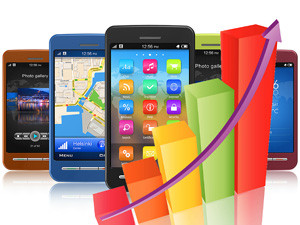
SA's mobile operators are in for an uphill battle, while consumers will get what they have long been waiting for in terms of better offerings, service and value for money.
This is according to analysts and comes as the local telecoms market begins to follow the global trend of market saturation - a situation in which it is much more difficult for new entrants and existing operators to garner new connections, and so consumers become more highly prized.
Last week, a new IDC report showed the Western European market failed to grow in 2014 for the second consecutive year - "clear signs of saturation". While SA lags Western Europe, due to the country's different setup, analysts note it is going the same way.
Research firm Gartner also recently revealed worldwide sales of mobile phones to end-users were flat in the third quarter of 2014. However, IDC and Gartner noted smartphone sales to end-users grew considerably.
Total shipments declined 5.2% year on year, according to IDC's European Mobile Phone Tracker, and the research firm said the feature phone segment continued in free fall, with shipments down 39% year-on-year.
Local league
While SA is far from saturation levels in terms of data use, in terms of subscribers and voice usage, the market has matured rapidly. In terms of mobile subscriptions, penetration in SA is at around 154%, while smartphone penetration is just above 30% (expected to be above 40% by year-end).
IDC telecoms analyst George Kalebaila says, with 1.5 SIMs for every person in SA, growth will not come from new subscribers - but from provisioning of new services such as data.
What is market saturation?
Business Dictionary defines market saturation as: (1) "Point at which a market is no longer generating new demand for a firm's products, due to competition, decreased need, obsolescence, or some other factor.
"(2) Measure of the extent of a product's sales volume relative to the number of total potential customers, expressed as a percentage. Formula: sales volume of a product x 100 : number of total potential customers."
SA's operators have been strategising around the looming landscape shift, looking to digital services to drive data usage, although analysts have cautioned they face strong headwinds from so-called "over-the-top" players.
This is good news for consumers, says Ovum analyst Richard Hurst, adding market saturation will imply operators will have to look to each other's existing customers for new growth and will have to become more competitive in terms of offerings, service and overall value for money. "In the end this will probably [be] what the consumer has been waiting for since the start of the competitive market era."
Africa Analysis analyst Dobek Pater says greater competition to retain and win new customers translates into greater innovativeness that needs to take place - in terms of products, services, bundles and moving towards converged services.
Kalebaila notes smartphones - which are growing rapidly in SA as well as globally - enable operators to offer advanced digital services to consumers. "Operators will need to be more innovative with new services to cater for the evolving digital needs of consumers."
Feature phone fadeout
Smartphones in SA
World Wide Worx MD Arthur Goldstuck last year noted there were about 16.3 million smartphones in use in SA at the end of 2013. While this was originally forecast to grow to about 18.1 million by the end of 2014, growth acceleration suggested it could beat the 20 million mark ? a penetration increase from 30% to 40% in a year.
BMI-TechKnowledge director Brian Neilson puts the number of active smartphones in SA at around 23 million as at year-end 2014 - a figure that is up 23% on the December 2013 figure of 19 million. "That means nearly 30% of all active SIMs in the market are in smartphones."
Meanwhile, feature phones are on the road to obsoleteness - although there is still some terrain to tread when compared to developed regions like Western Europe, say analysts. BMI-TeckKnowledge director Brian Neilson says, as soon as low-end smarpthones cost the same as feature phones - a reality that is approaching - feature phones will be a thing of the past in SA. "I think there will still be some feature phones around for a few years yet, perhaps even by 2020."
Kalebaila says, while feature phones have been on a slow road out, their decline will accelerate in the next few years, as more affordable smartphones become available. He notes MTN and Vodacom's white label smartphones (MTN's Steppa and Vodacom's Smart Kicka) are doing well in the market.
"Although feature phones will continue to be a factor in the short- to medium-term, they will become peripheral to the services strategies of most operators and will fade into oblivion in the next four to five years in SA."
Share